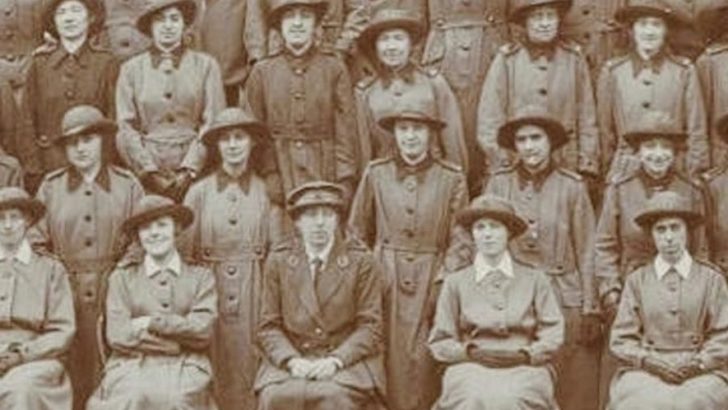Irish Servicewomen in the Great War: From Western Front to roaring twenties
by Barbara Walsh (Pen & Sword Books, €25)
Books dealing with service in time of crisis or disaster are always an interesting read, as so often they reveal aspects of the best parts of people’s characters. This is especially true in war, and the service of women from Ireland in the Great War is a case in point.
The Women’s Auxiliary Army Corps was established in February 1917. Following the carnage on the Western Front the British government was finding it exceedingly difficult to replenish the ranks of the army. Thus one of the main reasons for the establishment of the WAAC was to release soldiers from non-combat duties and have them available for service on the front line.
Opportunity
Thousands of women enthusiastically joined the new force. Many had relatives – husbands, brothers, cousins – on active service or on the casualty lists and they welcomed the opportunity to join in ending the war.
Others grasped the chance of having a secure and well-paid job.
The early phase of the training of the new force was the same as that for regular soldiers. Then it concerned the various duties members of the force would be undertaking. This included office and secretariat work, telegraph and telephone communications, driving all kinds of military vehicles, ancillary service in canteens and first-aid stations, acting as supervisory administrators and involvement in intelligence-gathering.
Some 60,000 women drawn from all parts of the United Kingdom rallied to the colours. Popularly known as the skirted soldiers, their contribution to the war effort was deeply appreciated by the military authorities. While they were not involved in combat, some of them witnessed horrific incidents. Many of them won awards and decorations.
The author mainly concerns herself with those drawn from Ireland. They came from the four provinces and from a wide range of backgrounds: Catholic, Protestant; middleclass, working-class; urban, rural. The members who made the most vital contribution to the war effort were those who were seconded to the Royal Engineers and were attached to Signal Units, where they were key-players in ensuring that the Western Front’s crucial Lines of Communication remained viable.
Following the Great War, the Irish members continued to have strong links with the WAAC. They participated in the traditional ceremonies at Islandbridge in Dublin commemorating the fallen in the two World Wars. Apart from that, however, they kept a low-profile. The brutality and misconduct of elements in the crown forces during the War of Independence left in ‘Southern Ireland’ a legacy of profound antipathy to everything associated with the British army.
Barbara Walsh describes in great detail the challenges and difficulties faced by the WAAC and its members at home and abroad. Some of them in attempting to secure payments due to them even found the War Office most unhelpful.
Walsh also records in considerable detail the service of the WAAC at the Army HQ in Rouen, where, it seems, many of the Irish girls were stationed. There the war came perilously close to them in November 1918.
The author provides profiles of a number of the Irish members. Among them is Martha Hanna from Poyntzpass in Co. Armagh. She transferred to the WAAC from the GPO in Dublin and served in a Signal Unit. After she was demobbed she met and married George Fisher, also a veteran of the war, and they settled in Australia.
They became aware that the IRA had infiltrated the poster services”
Others who returned home to their posts in the GPO had less reason to be happy. They were appalled at the conflict between the crown forces and those of Sinn Féin. There was an utterly changed socio-political environment. Worst of all, they became aware that the IRA had infiltrated the postal services and telephone exchanges and that they were powerless to affect that situation.
This important and seminal study is to be warmly welcomed. It will encourage people to learn about their relatives who served in the WAAC. And it will light the pathway into further historical and sociological analyses of different aspects of this neglected topic.


 Members of the Women's Army Auxiliary Corps pictured in 1917.
Members of the Women's Army Auxiliary Corps pictured in 1917. 